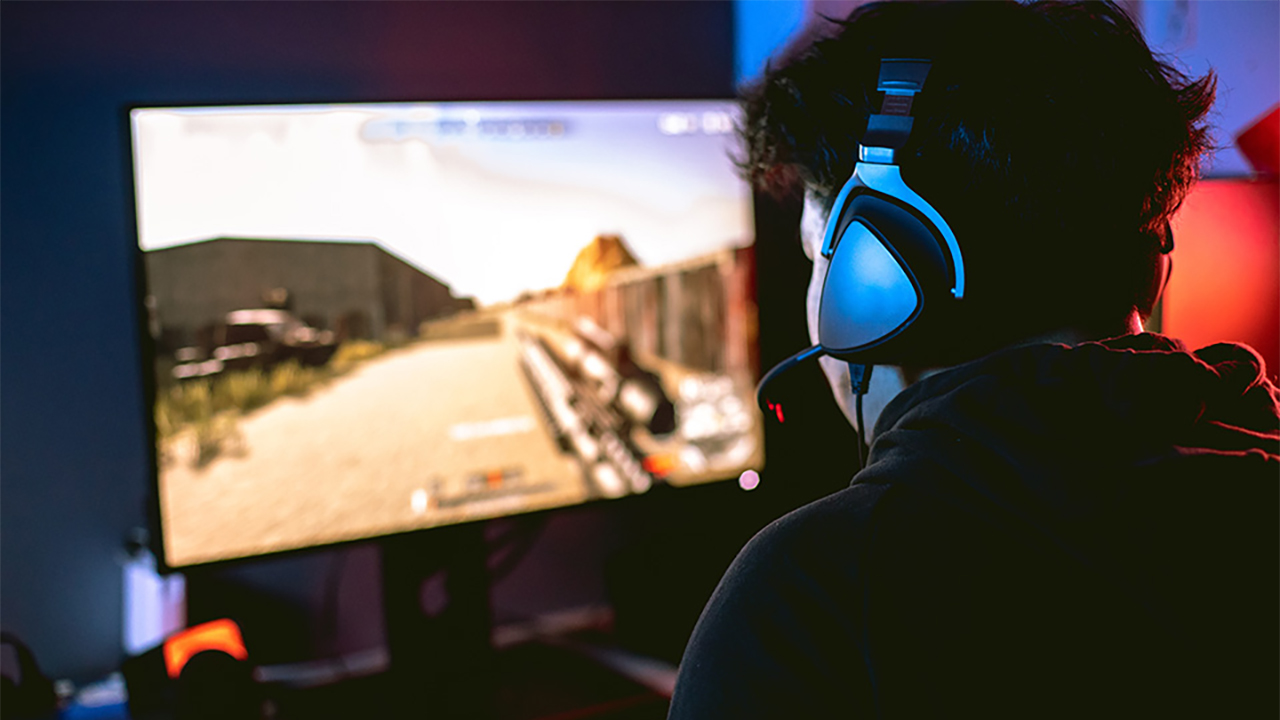
At the core of all Confiction Labs games and universes is a new dimension in gaming and entertainment media called Collaborative Entertainment (CE). It combines everything players have come to know and love about gaming so far, but makes it so that their contributions directly affect the games they immerse themselves in. Imagine being able to tell your stories with the whole player base as witnesses. It brings a sense of ownership within games that will keep people coming back and keep them invested, while also incentivizing them for the changes they’ve helped create.
Collaborative Entertainment has the potential to form a mutually inspiring symbiosis between creatives, investors and audiences. It removes the financial, geographical and network limitations that traditional creatives often face when bringing their ideas to life. Contributions from fans have long been a natural part of gaming as well, but rarely do they receive any recognition. CE leverages the ideas and talents of a game’s passionate fanbase and incorporates them to create richer universes.
Collaborative Entertainment Has Always Been in Gaming Culture

Young gamer playing video game wearing headphone.
Gamers and fans in general become avid contributors to IPs when these brands inspire them long after their play session has ended. Fans are often compelled to seek out more ways to interact and express their interest, whether it is through merchandise, other forms of media, or personal creations. A quick search of your favorite franchises online will reveal fanfiction, fanart, mods, lore theory videos, lengthy forum posts, and even fan-made remakes. Some of these get a lot of attention on the internet before fading into obscurity. In the case of games, these creations rarely make it to developers, much less become a part of the game’s future. And even if they do, contributors seldom get the attribution or the incentives for their ideas. There is also a very complicated legal network to navigate, considering all the parties that could be involved in such a collaboration.
But what if all these fan-made stories, art, music, and theories were empowered by a platform that collects, shares and reviews them for potential integration into a game and its larger universe? What if you get incentives and rewards for directly affecting a game’s continuity?
With Collaborative Entertainment, not only are games built by the collective vision of their developers, but they also become a playground where the world transforms because of its fans. As a result, games will have a more engaged and involved community that wants to see how the next chapter unfolds. Even after years of inactivity, players can return to the game and still find the marks they had left behind.
This is all made possible by the ConFict Data Layer (CDL), an open data layer created by Confiction Labs using a combination of new technologies including blockchain and AI. The CDL is responsible for collecting, organizing and categorizing all submissions made about a game, which can then be accessed by a dedicated team responsible for pushing lore and in-game updates. With the CDL running, Collaborative Entertainment is achieved, connecting all these different fan-made media to a game’s repository, with the potential to be used later.
Merging Gaming and Entertainment with User-Generated Content

A lot of media connected to gaming is user-generated content (UGC) — from fanfics in random corners of the internet to bigger creations like films, television shows, and novels. Many of these bigger creations have original stories and concepts, and some may even include new lore that later gets added into the game as canon due to the attention received by the production. People tend to enjoy streaming content because it allows them to see a game through the lens of someone else playing it. A player may be creating new stories with the in-game decisions they make, which could be vastly different from those of the viewer.
UGC has always been popular in gaming, but it has mostly existed on a separate island. Modding, an activity that involves modifying an existing game for fun, has been a popular pastime for many gamers since the 1980s. ModDB, a well-known modding website, contains over 50,000 mods across different games, platforms and genres. These range from graphical and UX upgrades to more complex creations, like new campaigns, storylines and game modes.
Even outside of gaming, UGC has been viewed positively. Websites like YouTube teem with user-generated content, and people often look at reviews created by other people to make purchasing decisions rather than a product’s marketing copy.
Notably, some developers have been inspired by UGC to enhance their games. CDProjektRed, the developer of the Witcher video game franchise, was able to introduce graphical upgrades and other quality-of-life improvements to The Witcher 3: Wild Hunt based on input from fan-made mods. On another end, UGC has even been encouraged by many developers, who would create tools to help players build something new around their projects. Games like Minecraft and Fortnite integrate UGC functions to empower their players to express themselves, build their own worlds, and tell the stories they want to tell. Valve’s Source Filmmaker tool, released with Team Fortress 2, gave way to a whole new wave of custom content based on different titles.
However, despite the role UGC has played in enriching gaming experiences and helping build better games, there continue to be limitations around incentivization and attribution. Collaborative Entertainment changes this, and it will be fully demonstrated with Confiction Labs’ multiplayer roguelite shooter, Riftstorm.
Collaborative Entertainment in Riftstorm

In Riftstorm, humanity is threatened by nightmarish creatures and cosmic horrors called mythics. Players take on the role of secret operatives with unique abilities and weapons capable of defeating these otherworldly beings. With Collaborative Entertainment, players have the opportunity to shape Riftstorm’s future.
One way Riftstorm uses CE is through Flashpoint Events, where players’ actions are recorded, affecting the game. A recent Flashpoint Event called Shade Resurgence had players take part in a two-week narrative arc under the label of an operation. The final mission presented the players with a key decision point. Despite their best efforts, players were unsuccessful in completing the objectives, triggering a consequence. Shade appearances increased around the world while reducing equipment and currency drop rates. The players’ actions were also immortalized in a short comic that aggregates all those in-game decisions.
Another example of CE’s application is content submission. Let’s say that a player named RiftJohn logs in to find a new operation in Riftstorm. It is an event where players must fight against a mythic, shade-like threat terrorizing humans. He and his friends team up to tackle the operation, but it turns out harder than expected, and they fail just short of the final encounter.
Despite the loss, the group agrees that they enjoyed the epic battle they had just fought. Should RiftJohn feel inspired to retell the exploits of his team, he can add detailed notes to a casefile about their struggle against the shades before ending his play session. He might decide to write about how his character, John, was infected by a mythic, which transformed him and gave him ghost-like powers. He can choose to describe how John became someone else in the story — a half-human, half-ghost that retains his sanity.
If or when RiftJohn opts to submit his casefile to the Repository, a dedicated lore team can decide whether it would be a great addition to the world of Riftstorm. The team might choose to publish RiftJohn’s story in a Riftstorm newsletter, and they might even work on canonizing the character John in the game. Player RiftJohn can then receive rewards for his story, and he can earn even more incentives if his character ends up becoming an official part of Riftstorm. Then, with a new character added to the game, another player could get inspired to write their own story, and the cycle repeats itself.
Setting Up the Future of Collaborative Entertainment in Web3

Immutability is a big part of making Collaborative Entertainment possible. Attribution to creators must remain unchanged as games like Riftstorm are developed. Web3 already has an inherent immutable property to it because of blockchain technology, and this characteristic is important because of the shortcomings creators often encounter when dealing with web2 IPs and franchises.
True ownership for creators is nonexistent in web2. Even cosmetics or in-game items purchased with money can easily disappear when a developer decides to shut down or make those items unusable.
With web3, every asset and action is recorded onchain and cannot be altered. It removes any chance of manipulation, which ensures that players receive the recognition and rewards they deserve. It also makes tracking easier, enabling the smooth implementation of incentives. All of these elements help create a more inclusive economy where players benefit as much as developers.
Through Collaborative Entertainment, an avid player can have a source of income based on their in-game contributions. They can do something they love, help expand the games they enjoy, and get rewarded while getting recognition from the wider community. CE also makes it possible to tap into undiscovered talents from different parts of the world, opening up new opportunities for people to showcase their creative skills. Storytellers may gain careers as writers, and artists can be hired by developers to work on upcoming projects.
What makes Collaborative Entertainment unique is that it is not restricted to any specific type of media. All contributions can be part of a larger repository and influence each other. As creators build a portfolio of their contributions, recorded onchain, these become stepping stones for future work. A whole new section of gamers is about to emerge, thanks to Collaborative Entertainment.
Learn more about Confiction Labs here.

